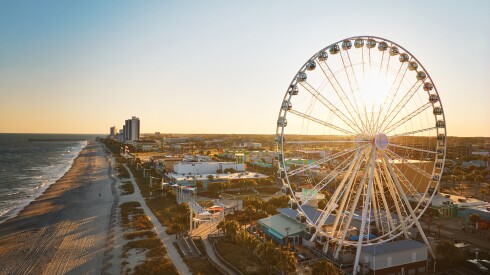In 2005, spirits writer Wayne Curtis, author of And a Bottle of Rum: A History of the New World in 10 Cocktails (as well as this feature on Caribbean rum), moved to New Orleans—just months after Hurricane Katrina swept through. “I had been twice the year before, when I was working on my rum book,” he says. “And between those two trips I decided I should probably live there because it felt like home instantly.”
Curtis waited a few months after the hurricane, then made the jump and moved to New Orleans. And he’s been sipping and rumming and writing there ever since. A few years ago, we joined him for an architecture tour of New Orleans’ historic French Quarter and to learn more about the city’s storied drinking culture. Here are some of his timeless tips about navigating New Orleans’ drinking culture.
1. It’s America’s classic spirit city…
“New Orleans has always been a spirit city—you could get a Sazerac or a Ramos Gin Fizz or a Brandy Milk Punch at any time over the past 100 years, and that hasn’t changed much.”
These days, the classics are just as worthwhile to seek out as newer, more inventive drinks.
2. It’s more than just Bourbon Street
“Everyone expects the booze and beads scene on Bourbon Street. But there’s a whole world outside of Bourbon Street where there’s a lot more interesting drinking happening—the neighborhood bars are pretty sophisticated.”
At AFAR, we’re partial to the Garden District for food and drinks (watch our video tour below for some of our favorite spots), as well as to Tremé, Marigny, and Bywater if you’re looking to explore beyond the city’s most well-known areas.
3. You can take your drinks to go
“People still seem to be surprised about the to-go cup culture. If you’re at a bar and need to leave before you’ve finished your drink, just grab a plastic cup and take it with you. I think it’s extremely sophisticated. I’m always in a foul mood when I travel to other cities where they don’t let you do that.”
4. No last call here
“In other cities, there’s such a last-call culture where everybody orders two drinks, pounds them down, and then goes out on the street at once. But since bars don’t have a closing time, you don’t see that much in New Orleans. People can come and go and drink at their own pace without pressure.”
5. There’s no shame in day drinking
“In New Orleans, you can go to a bar at 10 in the morning and nobody judges you for it. You go and you chat with people, and it’s a different experience than going to a bar at 10 at night. But it’s fine—day drinking’s just fine.”
6. Make like a local and end the night with a po’ boy
“If I’m in the French Quarter, I’ll often end up at Erin Rose, a neighborhood dive bar. There’s a window in the back called Killer Po’ Boys that serves more creative versions [of the New Orleans sandwich].” The kitchen is open until 8 p.m. Sunday through Thursday and until midnight on Fridays and Saturdays.
>>Next: The New Orleans Neighborhoods You Must Visit
This article was originally published in 2016 and most recently updated on January 23, 2024 with current information.











